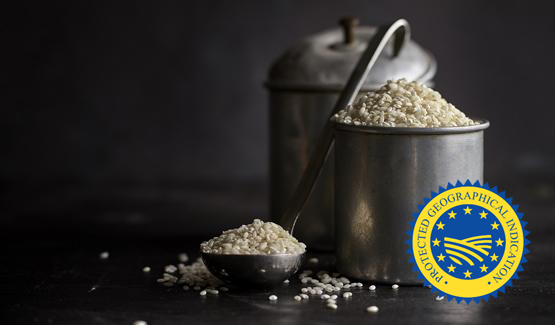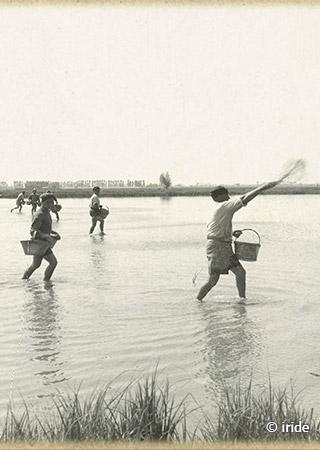
Hydrated by the Tione, Tartaro and Adige rivers and nourished by the rich, alluvial soils found in the lowlands of Verona, Riso Nano Vialone Veronese PGI is a creamy and absorbent rice.
Grown, harvested, and milled in Verona according to high standards and traditional methods, it is widely used in risottos and is also adaptable to a variety of other dishes.
Origins
Rice-growing first came to the lowlands of provincial Verona early in the 16th century. Brought south by families from Lombardy, the practice transformed unproductive marshland into a landscape of cultivated paddy fields.

This transformation was overseen by the Provveditori ai Beni Inculti (Superintendents for Uncultivated Resources), a dedicated public body appointed by the Venetian Senate in 1545.

As well as establishing networks of canals and ditches, the Provveditori also authorised the construction of ‘rice huskers’, rudimentary mills in which the hulls of rice were removed by water-powered pestles.
Originally, Veronese rice was sold almost exclusively in Venice’s Rialto market. From there, its reputation grew and its popularity spread throughout the 17th and 18th centuries.
By the 20th century, advances in breeding lead to the creation of the Vialone Nano rice variety, a hybrid of the older Nano and Vialone varieties. This new variety was first cultivated in 1937 and was introduced into the province of Verona in 1945.
In 1996, the excellence of the variety was acknowledged when Riso Nano Vialone Veronese became the first rice in Europe to be recognised under the protected geographical indication (PGI) designated.
Production

Riso Nano Vialone Veronese PGI is produced in 24 municipalities in the southern lowlands of Verona. Known as the bassa Veronese, this area is covered in a carpet of light, alluvial soils.
Fresh spring water flows from calcareous rocks and floods the plains, depositing minerals that bestow a marked alkaline character upon the soil. It is this alkaline character that distinguishes the rice fields surrounding Verona from most other Italian rice-growing areas.
The soil is carefully maintained by cultivation techniques that have been handed down over time and that have naturally evolved around the needs of the local environment. Rice growers carefully regulate flooding and drying processes, while crop rotation makes it possible to obtain a wholesome and high-quality yield while considerably reducing the need for plant protection products and chemical fertilisers.

Once harvested, the rice is brought to local mills, the direct descendants of the numerous ‘rice huskers’ that sprung up in the region during the 16th century. Some of the original mills have survived through the centuries and are still operating today.
Although the milling process is usually carried out by modern machinery these days, millers follow the same criteria and strive for the same results set down by their ancestors.
Once milled, the grains are packaged within the defined geographical area, ensuring the maximum amount of freshness is retained. The grains are rich in starch, most of which is released upon cooking, while a high amylose content allows the grains to retain their shape and structure, even under intense cooking.
Traditional cooking methods bring out the best of the rice, unlocking waves of pearly grains with a creamy texture perfectly suited for risottos and a delicate but distinctive aroma that blends wonderfully with a wide variety of sauces, dressings, and ingredients.
More information
Riso Nano Vialone Veronese PGI – legal specifications

